An artificial reef programme aims to restore marine life in Tauranga Harbour.
After Cyclone Gabrielle, Tauranga Harbour saw a massive decline in biodiversity, with a colossal build-up of sediment covering reef systems.
Deep Dive Division, led by Tua and Courtney Karalus, has created an underwater reef system to help the necessary larvae and algae find a new home.
The project, involving local iwi and universities, aims to support marine ecosystems and the “blue economy”.
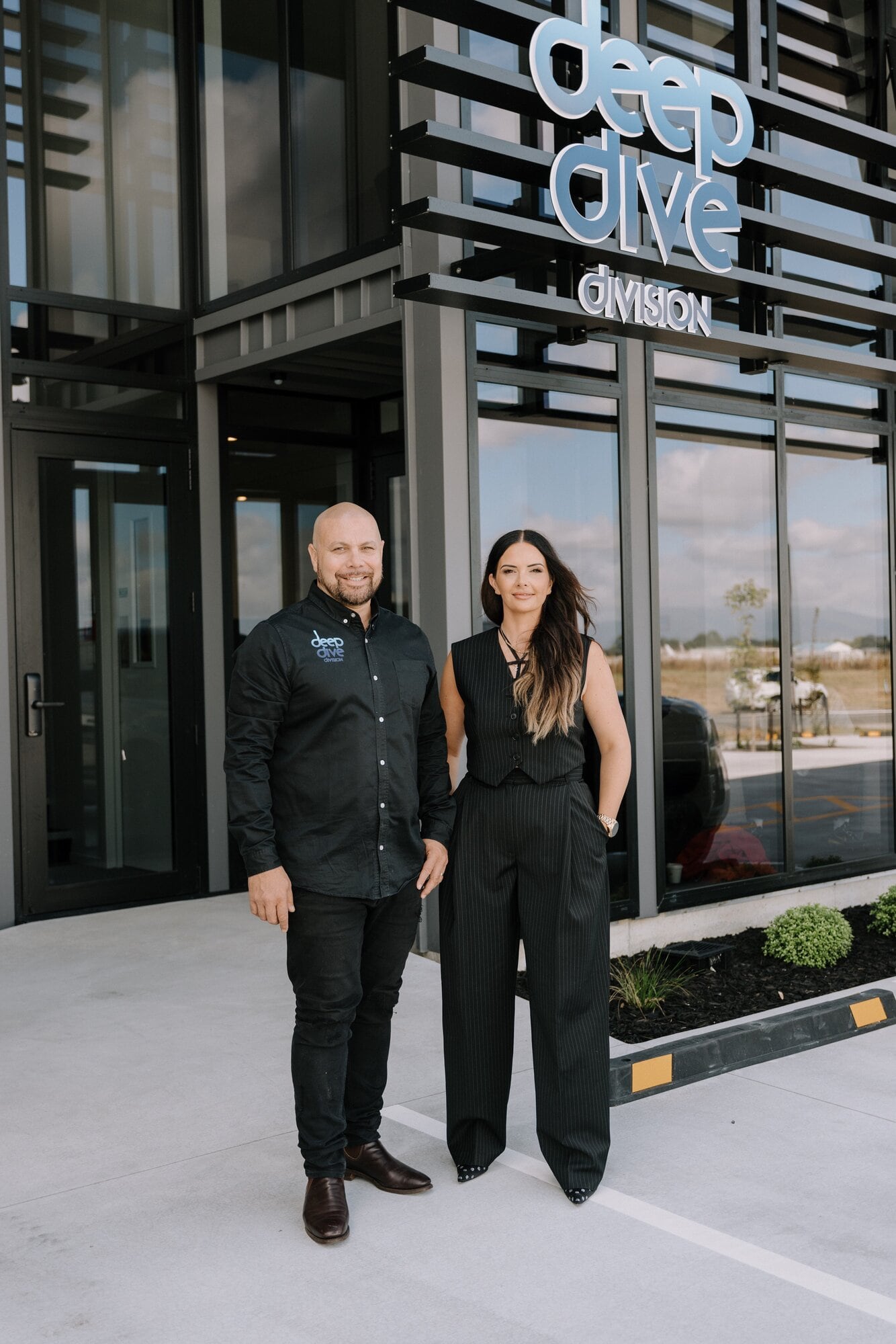
Tua and Courtney Karalus, co-owners of Deep Dive Division.
“The rest is the circle of life,” Tua Karalus said.
Deep Dive Division is a Hamilton-based company specialising in commercial and scientific diving services across Aotearoa.
It’s the only Māori and Pacific-owned dive company in New Zealand, combining Māori perspectives with environmental science and advanced technology.
The nine reefs, situated 13m deep in Tauranga Harbour, are collectively named Peara, meaning “pearl” in te reo Māori and symbolising the nucleus of change, growth and life, Karalus said.
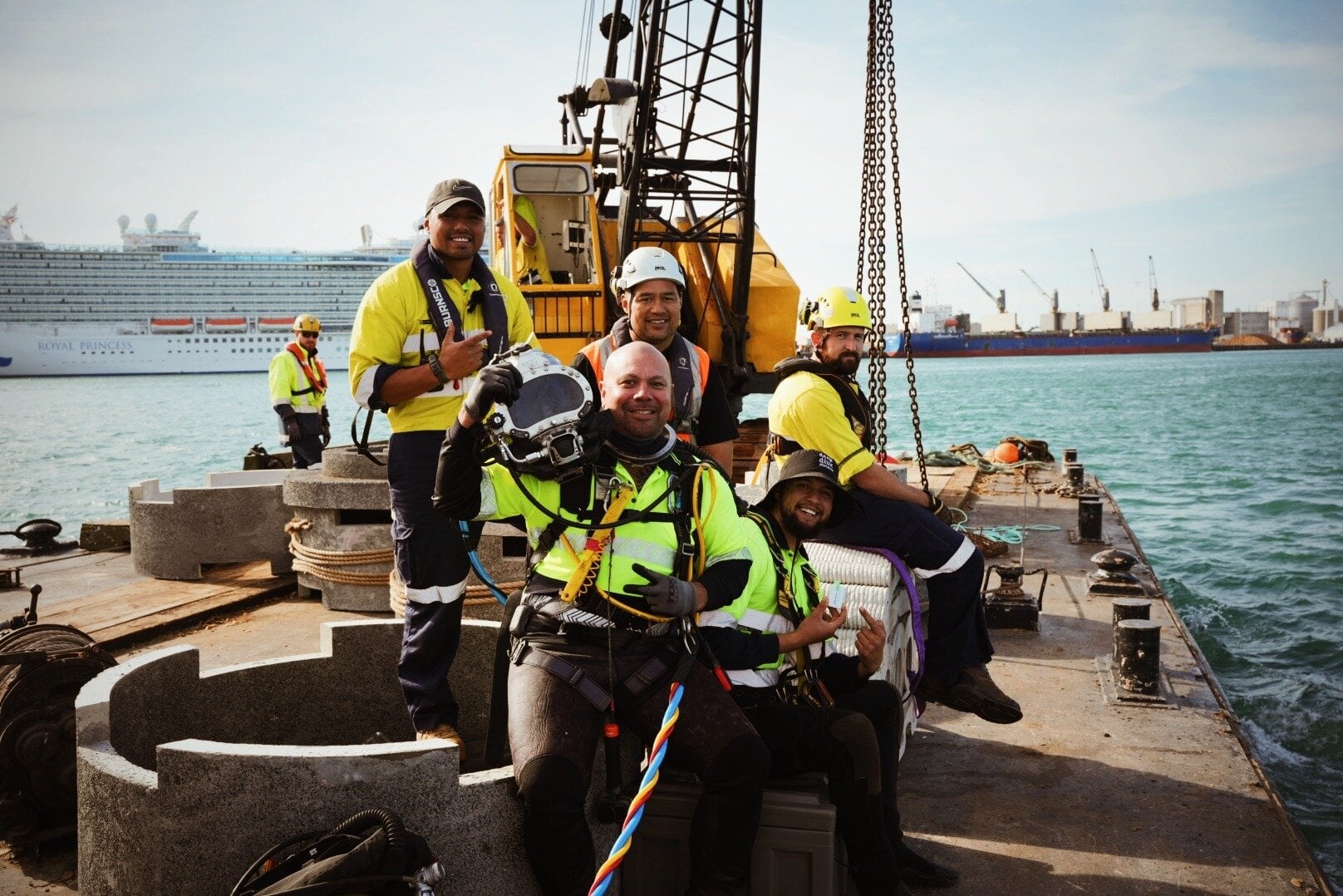
The team at Deep Dive Division get ready to send the artificial reef to the ocean floor.
The artificial reefs are also given another name, “Social Housing for Crayfish”, and use natural fibres and marine-grade concrete along with proven techniques in how to deploy and rig them to the ocean floor.
Artificial reef systems have been deployed in the water to biomimic the habitats of our natural marine ecosystems and restore and protect biodiverse native marine life.
Six of the structures were manufactured at Hynds Pipe Systems Ltd under the leadership of Hynds Holdings director and R&D director Aaron Hynds.
Artificial reef systems have been deployed in the water to biomimic the habitats of NZ’s natural marine ecosystems and at the same time, the remaining three were constructed using a unique 3D concrete printing technique.
The project is a consultation between Deep Dive Division, the University of Waikato, local iwi, Hynds Pipe Systems Ltd and the Port of Tauranga.
The trial is scheduled to run for an initial period of 24 to 36 months.
The effects of the artificial reefs on marine life are plain to see and happen fast, he said.
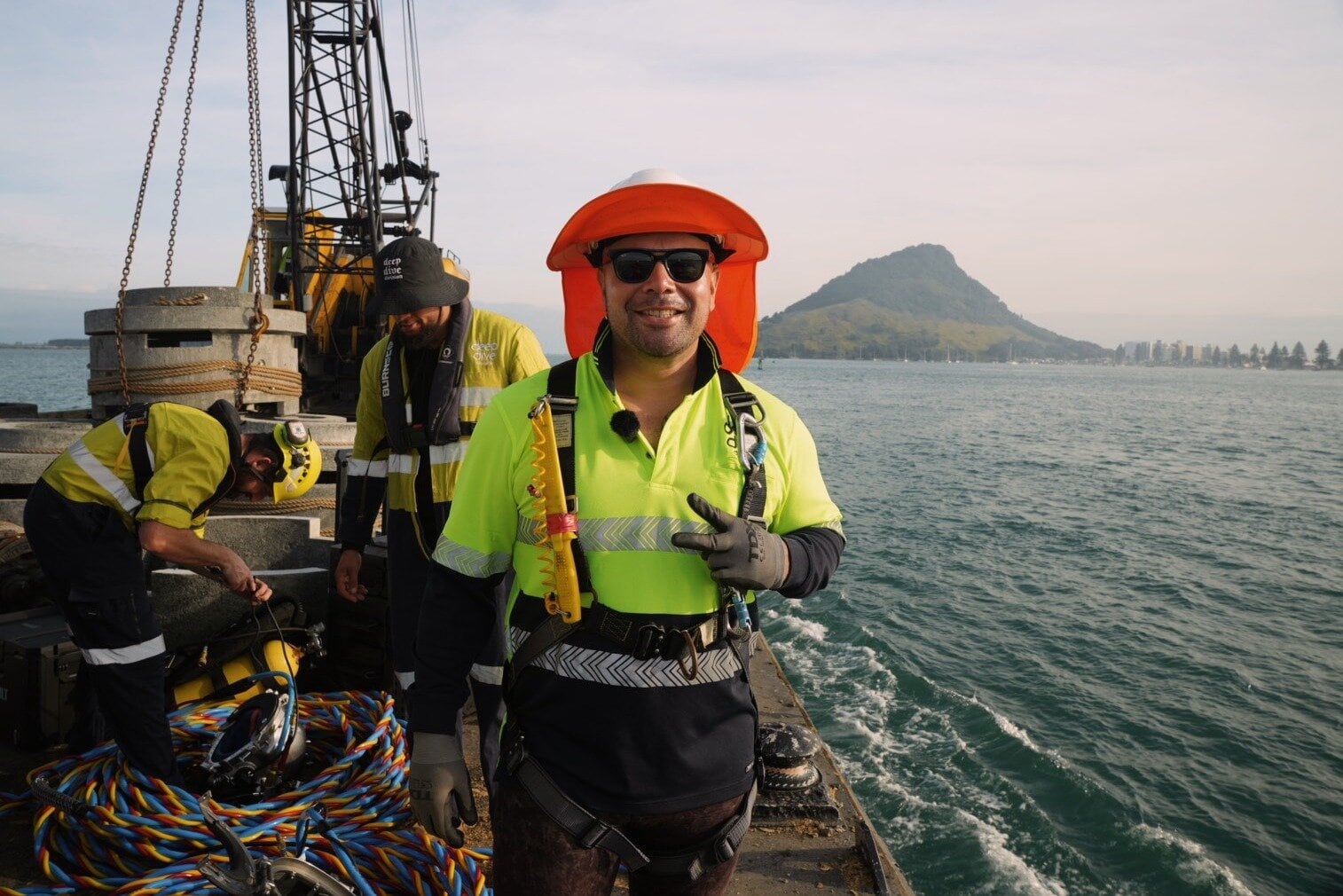
Processed with VSCO with dog3 preset Tua Karalus out on the Tauranga Harbour.
Karalaus had started installing the second reef at the Tauranga Harbour, and when he returned to the first reef, crayfish were already crawling on it.
“It went straight to the hole that was designed for it.”
Projects like Peara are a push into the “blue economy” and the beginning push into aquaculture, he said.
“We embrace this industry because there will be jobs for local people.”
It is a very purpose-driven project, starting with surveying the water and marine life and understanding the situation in Tauranga Harbour in real time, Courtney Karalus said.
There is also a very purposeful New Zealand-led and based approach to creating these artificial reefs, she said.
“Many reef systems going in New Zealand are being bought in from Australia.”
Deep Dive Division recognises the strong cultural identity New Zealand has regarding the ocean and freshwater, Karalus said
“We’ve got a marine heritage that we need to acknowledge.”
Deep Dive was established in 2018 and involved with urban ocean agriculture structures, with a more real-world approach to environmental science.
She said the idea for the artificial reef, followed by the initial meeting with their partners in the Tauranga Harbour.
“We were sitting in our home office whiteboard and sketching something up.”
University of Waikato professor Chris Battershill and professor David Schiel from the University of Canterbury have led Ministry of Business, Innovation and Employment (MBIE)-funded research to assess marine life loss in the Eastern Bay of Plenty.
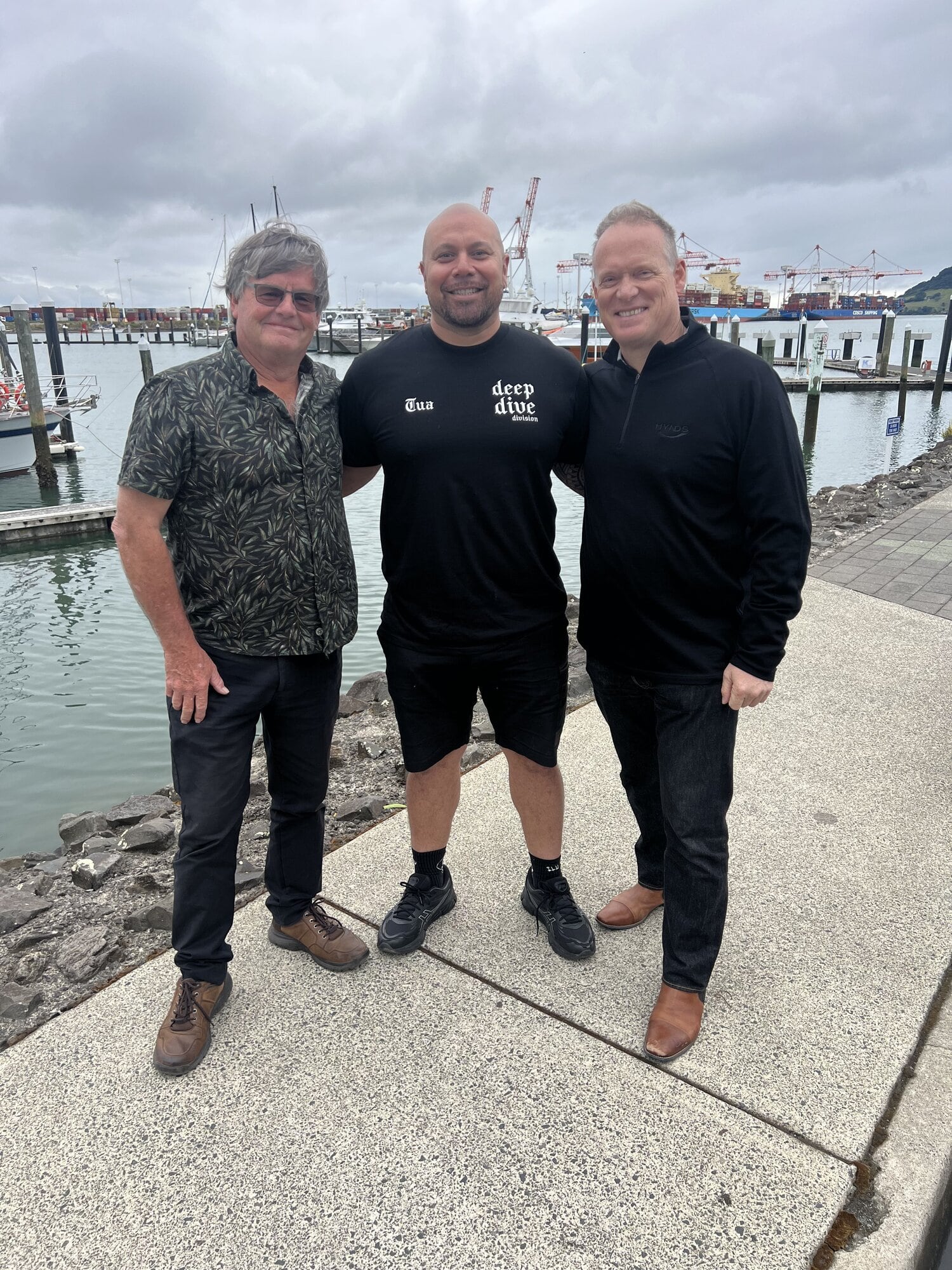
Chris Battershill, Tua Karalus, Aaron Hynds
Battershill has worked closely with Karalus on the development of Peara, providing scientific guidance on the conditions needed for marine ecosystems to regenerate.
The Peara reefs are designed to support the growth of seaweed and shellfish, act as a wave break, and attract marine life. Inbuilt harmonics also help deter whales and reduce the risk of beaching.
By introducing hard substrates, such as natural marine rock or engineered structures like Peara, the reefs provide essential footholds for marine life to grow in sandy or silty environments that typically lack structure.
Reef structures and their acoustic properties are designed using mātauranga Māori to support the colonisation of native marine species in harbours, said Battershill.
“These native colonisers help resist the spread of invasive species.”
Native kelps such as Ecklonia and Carpophyllum forest species, along with mats of turfing red seaweeds, provide habitat for important taonga like crayfish, kina and other invertebrates that also serve as food for fish, Battershill said
“These reef outcrops offer refuge for marine biodiversity that is now rare or absent in the harbour.”

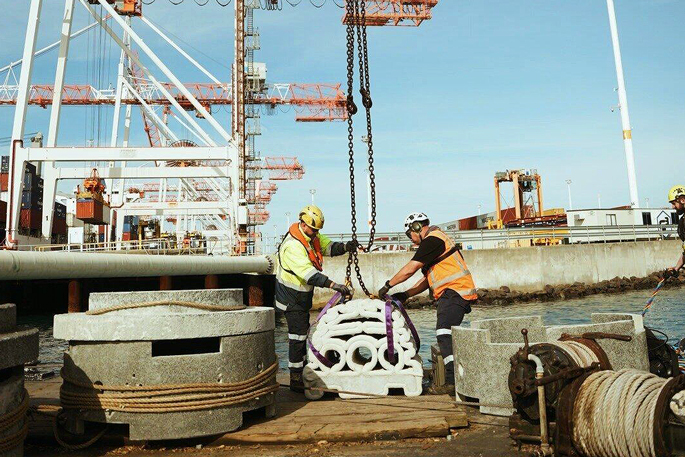

0 comments
Leave a Comment
You must be logged in to make a comment.